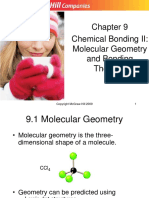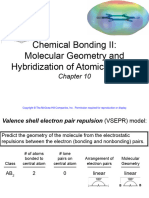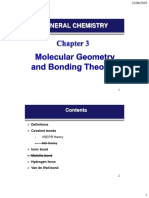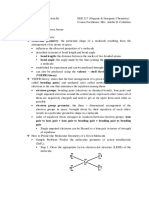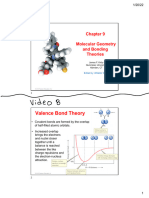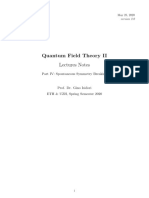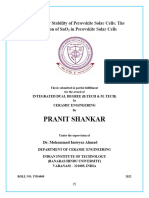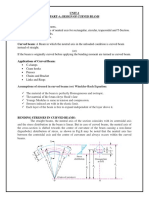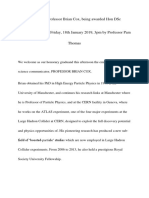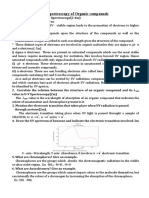0% found this document useful (0 votes)
157 views68 pagesChem Notes Chapter 10
The document discusses molecular shapes and valence bond theory. It begins by explaining how Lewis structures can be used to predict molecular geometries using the Valence Shell Electron Pair Repulsion (VSEPR) theory. VSEPR theory states that electron groups will adopt an orientation that minimizes repulsion. Common molecular geometries include linear, trigonal planar, tetrahedral, trigonal bipyramidal, and octahedral. Lone pairs can affect the molecular geometry. The document then introduces valence bond theory and hybridization, using CH4 and sp3 hybridization as an example to explain tetrahedral molecular geometries.
Uploaded by
johnCopyright
© © All Rights Reserved
We take content rights seriously. If you suspect this is your content, claim it here.
Available Formats
Download as PDF, TXT or read online on Scribd
0% found this document useful (0 votes)
157 views68 pagesChem Notes Chapter 10
The document discusses molecular shapes and valence bond theory. It begins by explaining how Lewis structures can be used to predict molecular geometries using the Valence Shell Electron Pair Repulsion (VSEPR) theory. VSEPR theory states that electron groups will adopt an orientation that minimizes repulsion. Common molecular geometries include linear, trigonal planar, tetrahedral, trigonal bipyramidal, and octahedral. Lone pairs can affect the molecular geometry. The document then introduces valence bond theory and hybridization, using CH4 and sp3 hybridization as an example to explain tetrahedral molecular geometries.
Uploaded by
johnCopyright
© © All Rights Reserved
We take content rights seriously. If you suspect this is your content, claim it here.
Available Formats
Download as PDF, TXT or read online on Scribd
/ 68






























